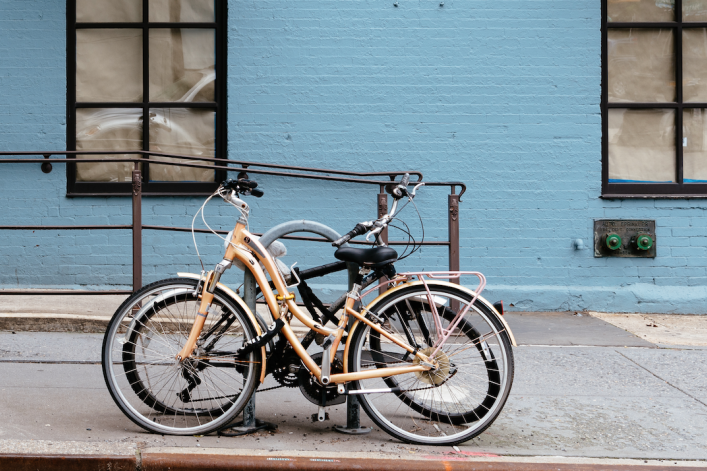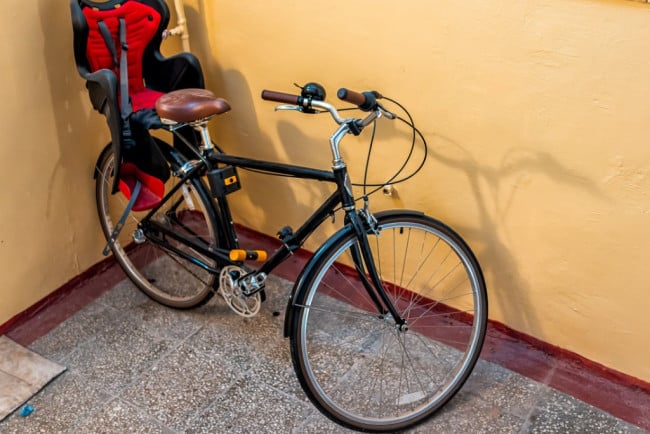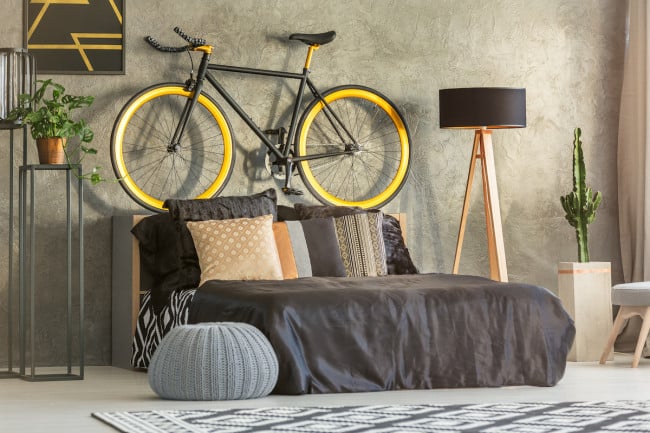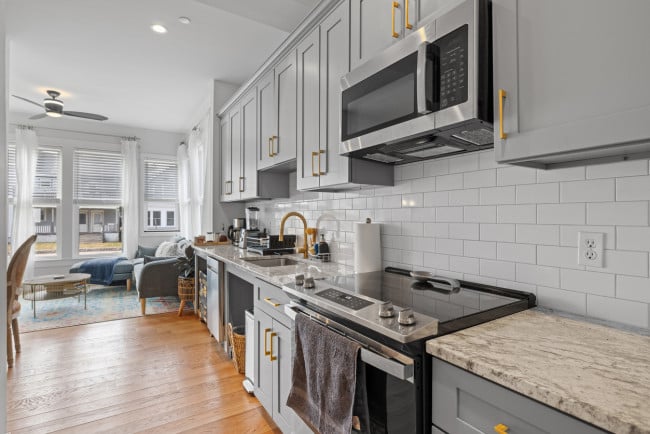I live in a walk-up with no bike room. What options do I have for storing my bike?

Team up with other renters in your building to ask your landlord to provide this low-cost amenity.
iStock
I live in a walk-up with no bike room and carrying my bike up the stairs is getting old. What options do I have for storing my bike?
For many New Yorkers the problem of bike storage is real. Apartments are small, and neither elevators nor bike rooms are a given. The number of cyclists on city streets increased during the pandemic and although many offices increasingly accommodate bikes—thanks to a change in the law more than a decade ago—there aren't equivalent obligations for owners of residential buildings.
Of course, lots of new buildings offer bike storage, but for those without this amenity, options include lobbying your landlord, finding a parking garage with secure spots for bikes, asking the city to install a rack on your street, or storing your wheels in your apartment.
Getting a bike room in your building
If you want to create bike parking that’s secure and accessible in your building, you’ll need to get approval from your landlord or management company. As with other renter initiatives, there's strength in numbers. Teaming up with other residents who want the same amenity is your first step. It’ll also help if you can identify a potential space for the bike parking—it should be as close to a building entrance as possible on the ground floor or in the basement.
The public transit and bike advocacy group Transportation Alternatives has tips for tenants who want to pitch their landlord with installing a bike rack in their apartment building. Suggestions include repurposing an old boiler room or using the space beneath the stairs. Also, remember to leave an aisle with a width of five feet behind the bike rack so you can maneuver them in and out.
Even if the other residents aren't avid cyclists, they might appreciate a bike room to store scooters or strollers, so don't rule out who you might be able to partner with for this project. In presenting your proposal to a landlord, you can point out the added value for the building and the relative low cost of the installation.
Your local parking garage
Another option is your local parking garage. Parking lots that accommodate 100 or more cars must also provide parking for bikes. They are also obligated to provide a pole or rack to which you can attach the bike.
The pros at Transportation Alternatives warn that the bike security at garages can vary widely with some racks tucked away in dark corners with no supervision from parking attendants. The cost is generally from $20 to $150 per month. Check the garage's operating hours to make sure the arrangement makes sense for you.
Bike storage solutions for your apartment
While it doesn’t solve the problem of lugging a bike up and down the stairwell, there are apartment storage solutions that allow you to avoid store your bike more unobtrusively. There’s hardware that allows you to prop up or hang your bike with minimal effort and little installation know-how. Tension-mounted columns are an option for tenants who don't want to drill holes in the wall.
Requesting bike racks from the city
NYC’s Department of Transportation can install free sidewalk bike racks based on community demand through its CityRacks program. These bike racks are designed for short-term bike parking around local businesses so aren't an equivalent to having secure bike storage in your building. However, having a nearby bike rack can be helpful if you're using your bike for a daily commute.
To get a bike rack from the city, the advice from Transportation Alternatives is be strategic—create a spreadsheet of local businesses you can partner with, ask them to fill out the online form suggesting a new location for a CityRack, also make the application yourself. When suggesting a location, consider how it might be impacted by hydrants, active driveways, and bus stops. Try to get your local community board to support your plans. You can also email your council member and ask for their support with your application. The process can take a while—in the meantime, make sure to invest in a sturdy bike lock.































